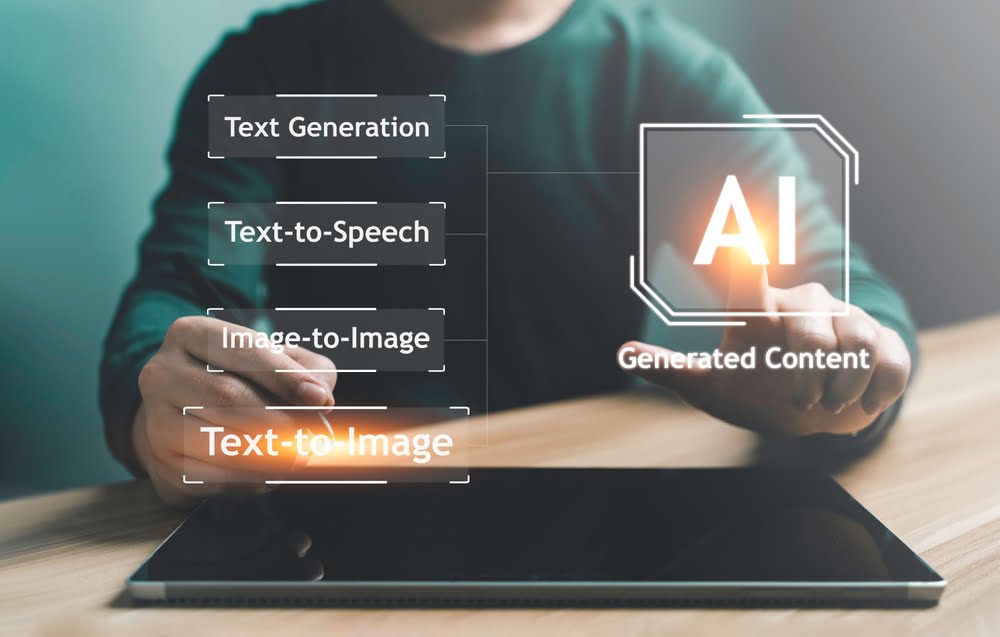
The AI domain is undergoing a remarkable upswing in both expansion and inventiveness. This surge is driven by advancements across various subfields and increasing adoption in diverse sectors. Global AI market projections anticipate a substantial CAGR of 37.3% within the 2023-2030 timeframe. This translates to a projected market size of approximately $1.81 trillion by the decade’s end. And this meteoric rise in itself is the reflection of what transformative power AI holds to reshape industries, drive automation, and revamp the way we interact with our technology.
At the foundation of powering this AI revolution lies a fundamental concept that has driven the advancement of AI technology: vector embedding. These are mathematical representations of words, phrases, or entities that stand behind many AI applications. They have quietly but profoundly changed the way machines understand and generate human-like text, which makes them an essential building block for generative AI.
In this post, we will explore the world of vector embeddings, understanding their critical role in generative AI.
Understanding Vector Embeddings
As we mentioned, vector embeddings refer to the mathematical representation of words, phrases, or general entities. They encode these constituents numerically in vector form, allowing computers to manipulate and process them efficiently. The developed vectors are computed in a manner so that they capture semantic relationships and contextual information from the represented elements constituting them.
Types of Vector Embeddings
Different vector embedding techniques exist, each offering unique properties and use cases. Prominent examples include Word2Vec, GloVe, and BERT. These methods vary in their training algorithms and how they encode semantic relationships. While Word2Vec focuses on word similarity, GloVe emphasizes global word-word co-occurrence statistics, and BERT embeddings employ deep contextual representations.
Training Vector Embeddings
The process of training vector embeddings involves exposing models to vast amounts of text data. These models learn to represent words and phrases by capturing the patterns and relationships within the data. The quality and size of the training corpus are critical factors in the performance of vector embeddings. A large, diverse dataset ensures that the embeddings capture a wide range of semantic nuances.
Advantages of Vector Embeddings in Generative AI
The use of vector embeddings in generative AI comes with several advantages. First, they help increase generative AI models’ performance and efficiency. Mathematical operations aid computers in manifesting and generating text as words can be transformed into numerical vectors. It saves time and is more accurate when a significant amount of content is being generated.
In addition, vector embeddings are powerful in recognizing semantic relationships. They are powerful enough to recognize synonyms, antonyms, and other important linguistics that are crucial in generating contextually similar text. This is essential for AI to generate text that closely resembles the human language.
Limitations and Challenges
However, it’s essential to acknowledge that vector embeddings are not without limitations. The potential for bias is one of the significant challenges. These embeddings learn from real-world data, which may contain biases present in society. If not carefully addressed, these biases can propagate and lead to unintended consequences in AI applications.
The other problem rests with data sparsity. The vector embeddings might struggle when attempting to capture meaningful relationships in the vector space without having enough training data for the languages that they’re being used on. Additionally, the data dimensionality affects the quality of embeddings, thus evoking a delicate compromise between the size of the data and leveraging the computational resources.
Future Directions and Developments
The generative AI vector embedding field is still showing rapid growth. Researchers are continuously exploring the embedding quality to enhance it with new techniques and architectural advancements. An emerging trend is that of infusing domain-specific knowledge into embeddings, one that pushes AI models to thrive in focused domains like healthcare, finance, and law.
Further research to mitigate the bias of embedding is expected to make AI applications more ethical and fair. With AI being embodied in every day of our lives, the need for making it free from biases and all-inclusive is becoming greater.
Final Thoughts
Vector embeddings are increasingly becoming the backbone of generative AI. Their ability to transpose natural language components into numerical vectors further opens doors for newer possibilities with natural language processing and text generation. Despite the plethora of benefits they provide, some of their limitations and challenges, most importantly about bias and data sparsity, should tread with caution.
As we look ahead, the future of AI technology is poised to take at its core vector embeddings. The deeper evolution and fine-tuning will provide more context-aware, accurate, and ethical offerings through AI applications. For professionals and enthusiasts alike, keeping up with these advancements is pivotal as AI might mold the world of technology around us.
- SEO Powered Content & PR Distribution. Get Amplified Today.
- PlatoData.Network Vertical Generative Ai. Empower Yourself. Access Here.
- PlatoAiStream. Web3 Intelligence. Knowledge Amplified. Access Here.
- PlatoESG. Carbon, CleanTech, Energy, Environment, Solar, Waste Management. Access Here.
- PlatoHealth. Biotech and Clinical Trials Intelligence. Access Here.
- Source: https://www.smartdatacollective.com/vector-embeddings-upcoming-building-blocks-for-generative-ai/
- :has
- :is
- :not
- $UP
- a
- ability
- About
- accurate
- acknowledge
- across
- addition
- Additionally
- addressed
- Adoption
- advancement
- advancements
- advantages
- ahead
- AI
- Aid
- algorithms
- alike
- Allowing
- amount
- amounts
- an
- and
- anticipate
- applications
- approximately
- architectural
- ARE
- around
- AS
- At
- attempting
- Automation
- Backbone
- BE
- becoming
- behind
- being
- benefits
- between
- bias
- biases
- Block
- Blocks
- both
- Building
- but
- by
- CAGR
- CAN
- capture
- Capturing
- carefully
- cases
- caution
- challenges
- changed
- closely
- Collective
- comes
- components
- compromise
- computational
- computers
- concept
- Consequences
- contain
- content
- contextual
- continuously
- Core
- critical
- crucial
- data
- day
- deep
- deeper
- Despite
- developed
- directions
- diverse
- domain
- domains
- doors
- drive
- driven
- each
- efficiency
- efficiently
- elements
- embedding
- emerging
- emphasizes
- end
- enhance
- enough
- ensures
- enthusiasts
- entities
- essential
- Ether (ETH)
- ethical
- Every
- every day
- evolution
- examples
- exist
- expansion
- expected
- explore
- Exploring
- external
- factors
- fair
- field
- finance
- First
- focused
- focuses
- For
- Forbes
- form
- Foundation
- Free
- from
- fundamental
- further
- future
- Future of AI
- General
- generate
- generated
- generating
- generation
- generative
- Generative AI
- Global
- glove
- greater
- Growth
- Have
- having
- healthcare
- help
- holds
- How
- HTTPS
- human
- if
- important
- importantly
- in
- include
- Increase
- increasing
- increasingly
- industries
- information
- interact
- internal
- into
- involves
- IT
- ITS
- itself
- jpg
- keeping
- knowledge
- language
- Languages
- large
- Law
- lead
- LEARN
- leveraging
- lies
- like
- limitations
- linguistics
- Lives
- Look
- Machines
- make
- MAKES
- Making
- manner
- many
- Market
- mathematical
- May..
- meaningful
- mentioned
- meteoric
- methods
- might
- Mitigate
- models
- more
- most
- Natural
- Natural Language
- Natural Language Processing
- Need
- New
- newer
- nuances
- of
- offering
- Offerings
- on
- ONE
- opens
- Operations
- or
- Other
- our
- patterns
- performance
- phrases
- pivotal
- plato
- Plato Data Intelligence
- PlatoData
- plethora
- poised
- possibilities
- Post
- potential
- power
- powerful
- Powering
- present
- Problem
- process
- processing
- professionals
- profoundly
- projected
- prominent
- properties
- provide
- pushes
- quality
- quietly
- range
- rapid
- real world
- recognize
- recognizing
- refer
- reflection
- Relationships
- remarkable
- represent
- representation
- represented
- research
- researchers
- resembles
- reshape
- Resources
- Rise
- Role
- Sectors
- semantic
- several
- should
- showing
- significant
- similar
- Size
- So
- Society
- some
- Space
- stand
- statistics
- Still
- Struggle
- substantial
- surge
- Take
- techniques
- Technology
- text
- text generation
- that
- The
- The Future
- the world
- their
- Them
- These
- they
- this
- Thrive
- Through
- Thus
- time
- timeframe
- to
- Training
- transformative
- transformed
- tread
- Trend
- Trillion
- undergoing
- understand
- understanding
- unique
- upcoming
- us
- use
- used
- various
- vary
- Vast
- Way..
- we
- What
- when
- which
- while
- wide
- Wide range
- will
- with
- within
- without
- Word
- words
- world
- zephyrnet







